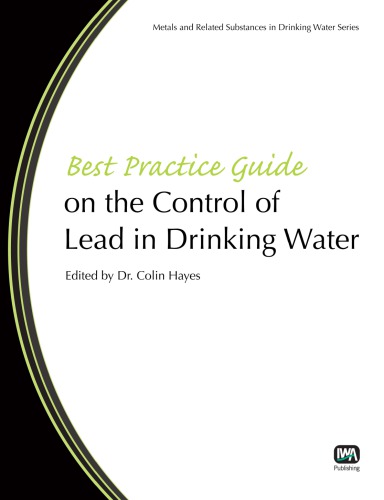Product desciption
Best Practice Guide On The Control Of Lead In Drinking Water Hayes by Hayes, Colin 9781306301978, 9781780401546, 1306301971, 178040154X instant download after payment.
The Best Practice Guide on the Control of Lead in Drinking Water brings together, for the first time, all of the regulatory, health, monitoring, risk assessment, operational and technological issues relevant to the control of lead in drinking water. Its focus is Europe and North America and the Guide benefits from the input of an international research network involving 28 countries. A large range of illustrative examples and case studies are provided. The Guide will be of interest to scientists, engineers, regulators and health specialists who are involved in the provision of safe drinking water. The reader will gain a comprehensive understanding of how to assess lead in drinking water problems, both in the water supply systems that serve a City, Town or rural area and at individual properties, dependent on their knowledge of pipe-work circumstances and water quality. Options for corrective action are outlined and their strengths and weaknesses explained, with information on costs and environmental impact. The reader should then be able to develop a strategy for controlling lead in drinking water in their area, establish an appropriate monitoring programme, select the right combination of corrective measures, and define the level of risk reduction that will likely be achieved. The Best Practice Guide provides a succinct compilation of the wide range of issues that relate to lead in drinking water, at a time when the regulations are under review in both Europe and North America. It will also be very relevant to all those implementing the Protocol on Water and Health, as lead in drinking water has recently been adopted as one of the key issues requiring assessment, improvement planning and reporting. The key features are: For the first time, all the complex inter-related aspects of lead in drinking water have been brought together. The detailed explanations given on sampling and monitoring should avoid mistakes being repeated. The information on optimising corrective treatment measures is the most comprehensive to date. The Best Practice Guide will facilitate the protection of water consumers from lead contamination and reduce associated health risks. This Guide is one of a series produced by the International Water Association's Specialist Group on Metals and Related Substances in Drinking Water. It is a state-of-the-art compilation of the range of scientific, engineering, regulatory and operational issues concerned with the control of lead in drinking water. Contents Sources of lead in drinking water; Regulatory background; Sampling and monitoring; Health perspectives; Evidence of problems with lead in drinking water; Risk assessment and health surveillance; Lead pipe replacement and other engineering options; Corrective water treatment; Control of materials;Investigational methods;Economics of plumbosolvency control; Case studies.
Abstract: The Best Practice Guide on the Control of Lead in Drinking Water brings together, for the first time, all of the regulatory, health, monitoring, risk assessment, operational and technological issues relevant to the control of lead in drinking water.


